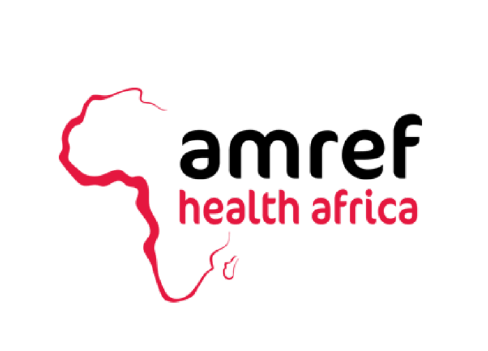Climbing Mount Kilimanjaro, the “Roof of Africa,” is a bucket-list adventure that draws thousands to its 5,895-meter (19,341-foot) summit each year. As the highest free-standing mountain in the world, Kilimanjaro offers an exhilarating challenge, but its high altitude poses significant health risks, particularly for first-time climbers. Altitude sickness, if not properly managed, can turn a dream trek into a dangerous ordeal. At Africa Paradise Adventures, we prioritize your safety with expert guides, comprehensive safety protocols, and a 98% summit success rate. In this detailed guide, we’ll explain altitude sickness, its symptoms, prevention strategies, and how our team ensures you climb with confidence. Whether you’re a novice trekker or a seasoned adventurer, this blog will equip you with the knowledge to conquer Kilimanjaro safely. Let’s dive in!

Understanding Altitude Sickness on Kilimanjaro
Altitude sickness, or acute mountain sickness (AMS), occurs when your body struggles to adapt to lower oxygen levels at high elevations. On Kilimanjaro, the risk begins above 2,500–3,000 meters (8,200–9,840 feet), where air pressure and oxygen availability decrease significantly. Most climbers start at trailheads between 1,800–2,400 meters and ascend to Uhuru Peak at 5,895 meters, making altitude management critical.
Types of Altitude Sickness
- Acute Mountain Sickness (AMS): The mildest form, affecting 50–75% of climbers to some degree. Symptoms include headaches, nausea, fatigue, dizziness, and loss of appetite.
- High-Altitude Pulmonary Edema (HAPE): A severe condition where fluid builds up in the lungs, causing shortness of breath, coughing, and chest tightness. It’s rare but life-threatening.
- High-Altitude Cerebral Edema (HACE): The most severe form, involving brain swelling. Symptoms include confusion, ataxia (loss of coordination), and altered mental state. Immediate descent is critical.
Risks Above 3,000 Meters
Above 3,000 meters, oxygen levels drop significantly, and the body’s ability to function is strained. Summit night, when climbers ascend from 4,800 meters (Barafu Camp) to 5,895 meters, is particularly challenging due to cold temperatures (-20°C/-4°F), steep terrain, and low oxygen. Without proper preparation, AMS can escalate, reducing summit success rates (overall ~65%) and endangering health.
Symptoms of Altitude Sickness
Recognizing altitude sickness symptoms early is crucial for safe climbing. Below is a table summarizing symptoms and remedies for AMS, HAPE, and HACE:
Condition | Symptoms | Remedies |
AMS | Headache, nausea, fatigue, dizziness, loss of appetite, trouble sleeping | Rest, hydrate (4–5L/day), pain relievers (ibuprofen), Diamox (consult doctor), slow ascent |
HAPE | Shortness of breath (even at rest), persistent cough, chest tightness, frothy sputum | Immediate descent, oxygen therapy, nifedipine (if prescribed), hyperbaric chamber |
HACE | Confusion, ataxia, severe headache, vomiting, altered mental state | Immediate descent, oxygen, dexamethasone (if prescribed), hyperbaric chamber |
Note: If symptoms worsen, descent is the only definitive treatment for HAPE and HACE. Africa Paradise Adventures’ guides are trained to recognize and respond to these symptoms promptly.
Prevention Tips for Altitude Sickness
Preventing altitude sickness is far easier than treating it. Here are proven strategies to minimize your risk on Kilimanjaro:
- Choose a Longer Route for Better Acclimatization
Shorter routes like the 5-day Marangu or 6-day Umbwe ascend too quickly, reducing acclimatization time and increasing AMS risk (success rates: 60–70%). Longer routes, such as the 8–9-day Northern Circuit or 7–8-day Lemosho, allow gradual ascents and “climb high, sleep low” days, boosting success rates to 90–95%.
Solution: Opt for our Northern Circuit or Lemosho treks, designed for optimal acclimatization. Our guides use the “pole pole” (slowly, slowly) approach to pace your ascent.
- Stay Hydrated
Dehydration exacerbates altitude sickness. At high altitudes, you lose more water through respiration and perspiration.
Solution: Drink 4–5 liters of water daily, starting from day one. Our porters provide purified water, and we recommend a 3L hydration system or water bottles. Avoid excessive caffeine or alcohol, which can dehydrate you.
- Consider Preventive Medications
Diamox (acetazolamide) is commonly used to prevent AMS by speeding up acclimatization. It’s typically started 1–2 days before the climb at 125–250 mg twice daily.
Solution: Consult a doctor to determine if Diamox is right for you. Carry the medication as a backup, even if you don’t plan to use it.
- Train for High-Altitude Conditions
Physical fitness reduces the strain of high-altitude trekking, though it doesn’t prevent AMS entirely.
Solution: Follow a 6-month training plan with cardio (running, cycling), strength training (squats, lunges), and long hikes (4–6 hours) with a 10–15 kg backpack. Practice at elevation if possible, or use altitude tents.
- Listen to Your Body
Pushing through symptoms like headaches or nausea can worsen AMS and lead to HAPE or HACE.
Solution: Report symptoms to our guides immediately. We conduct daily health checks to catch issues early.
Africa Paradise Adventures’ Safety Protocols
At Africa Paradise Adventures, your safety is our top priority. Our comprehensive safety measures ensure you can focus on the adventure while we manage the risks. Here’s how we keep you safe:
- Experienced Guides: Our Chagga guides, trained in high-altitude first aid, lead 150+ climbs annually. They’re skilled in recognizing AMS, HAPE, and HACE symptoms.
- Daily Health Checks: We use pulse oximeters and questionnaires to monitor oxygen saturation and symptoms twice daily.
- Emergency Equipment: Every trek includes oxygen tanks, portable hyperbaric chambers (Gamow bags), and first-aid kits for immediate response to severe altitude sickness.
- Evacuation Plans: Our guides are trained to facilitate rapid descents if needed, with pre-established evacuation routes and communication systems.
- Small Group Sizes: We maintain a guide-to-client ratio of 1:2–3, ensuring personalized attention.
- 98% Summit Success Rate: Our longer routes and safety protocols result in one of the highest success rates on Kilimanjaro.
Success Story: Laura, a 29-year-old graphic designer from Australia, experienced mild AMS symptoms (headache, nausea) on day four of her Machame trek. Our guides adjusted her pace, administered oxygen, and ensured extra rest, allowing her to summit Uhuru Peak without further issues. “I felt safe every step of the way,” she shared.
Additional Tips for a Safe Climb
- Pre-Climb Health Check: Visit a doctor 6–8 weeks before to confirm fitness and discuss Diamox or other medications. Required vaccinations include yellow fever; recommended ones are typhoid and hepatitis A/B.
- Nutrition: Eat high-calorie, carb-rich meals during the trek to maintain energy. Our cooks provide balanced meals tailored for high-altitude needs.
- Mental Preparation: High altitude tests mental resilience. Practice visualization and stay positive. Our guides foster a supportive group atmosphere.
- Best Time to Climb: Choose dry seasons (January–March, June–October) for stable weather, reducing physical stress. Our Rongai route is ideal for wetter months.
Pre-Climb Checklist for Altitude Safety
To prepare for Kilimanjaro’s altitude challenges, follow this checklist:
- 6–8 Months Before: Select a 7–8-day route (e.g., Northern Circuit, Lemosho) for optimal acclimatization.
- 3–6 Months Before: Start a training plan (cardio, strength, hiking). Consult a doctor about Diamox and vaccinations.
- 1–2 Months Before: Book with Africa Paradise Adventures. Practice hydration habits and test gear.
- 1–2 Weeks Before: Pack a 3L hydration system, first-aid kit, and warm layers. Review AMS symptoms.
- During the Climb: Drink 4–5L daily, report symptoms immediately, follow guides’ pacing.
- Post-Climb: Rest 1–2 days in Moshi/Arusha to recover.
Why Climb with Africa Paradise Adventures?
At Africa Paradise Adventures, we combine expertise, safety, and passion to make your Kilimanjaro climb unforgettable. Our local Chagga guides, trained in high-altitude safety, lead with a 98% summit success rate. We provide oxygen tanks, hyperbaric chambers, and daily health monitoring to ensure your well-being. Our eco-friendly practices support local communities, and our tailored packages, including 12-day Kilimanjaro + Safari itineraries, offer a complete Tanzanian adventure. Ready to summit safely? Climb with us!
FAQs
What is altitude sickness on Kilimanjaro?
Altitude sickness (AMS) is caused by low oxygen at high elevations, with symptoms like headaches and nausea. Severe forms (HAPE, HACE) require immediate descent.
How can I prevent altitude sickness?
Choose a 7–8-day route, hydrate (4–5L/day), consider Diamox, and train for 6 months.
What safety measures does Africa Paradise Adventures provide?
We offer daily health checks, oxygen tanks, hyperbaric chambers, and trained guides for rapid response.
When is the best time to climb to avoid altitude issues?
Dry seasons (January–March, June–October) offer stable conditions, aiding acclimatization.
Can beginners climb Kilimanjaro safely?
Yes, with proper preparation and our longer routes, beginners can summit safely.
Conclusion
Altitude sickness is a real challenge on Mount Kilimanjaro, but with the right preparation and guidance, it’s manageable. By choosing a longer route, staying hydrated, considering medications, and climbing with Africa Paradise Adventures, you can conquer the Roof of Africa with confidence. Our expert guides, advanced safety protocols, and 98% summit success rate ensure a safe, memorable journey. Ready to tackle Kilimanjaro without fear? Visit https://africaparadiseadventures.com/ to book your guided trek or request our free Kilimanjaro Packing List today. Climb smart, summit safe!





